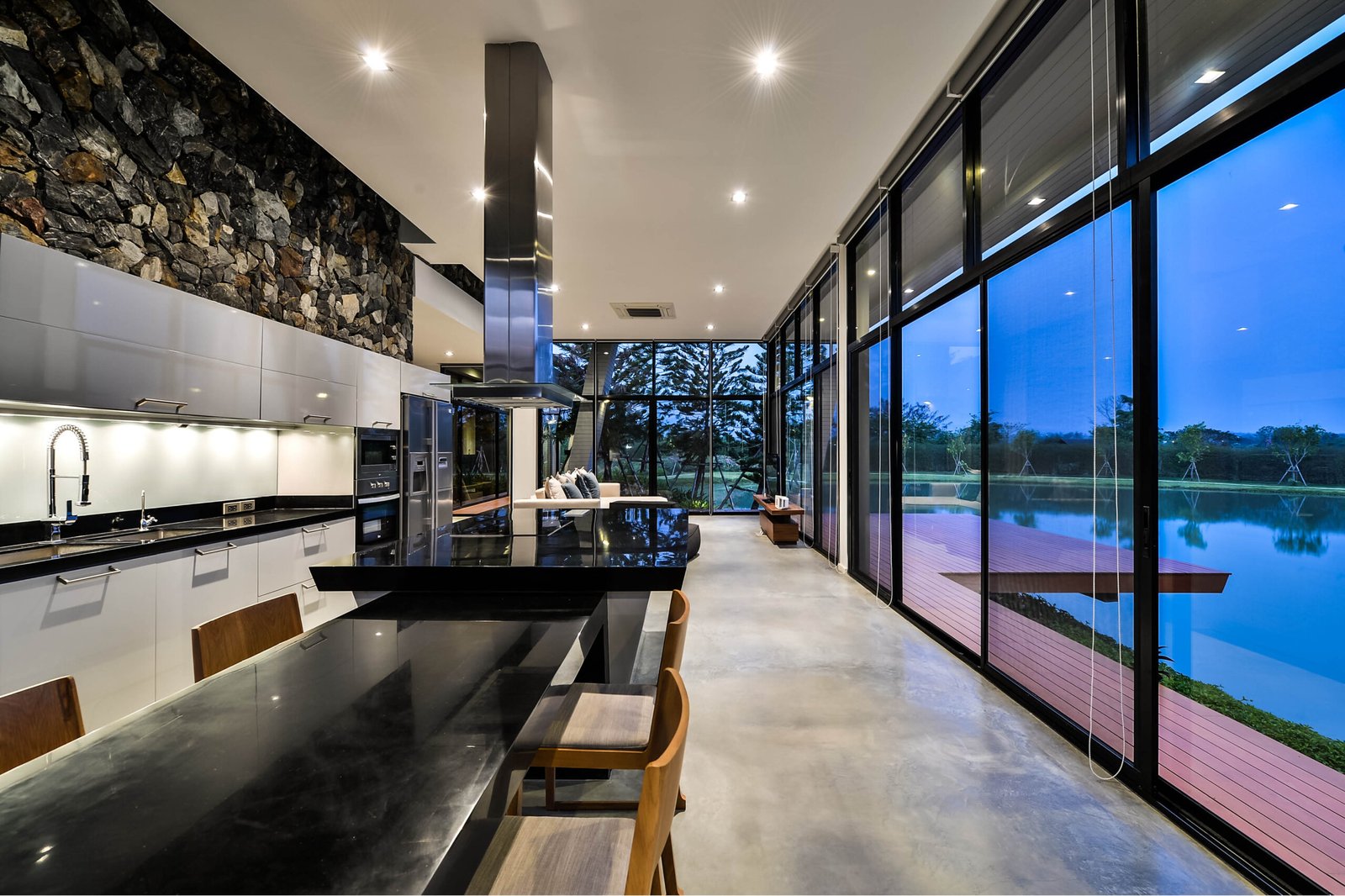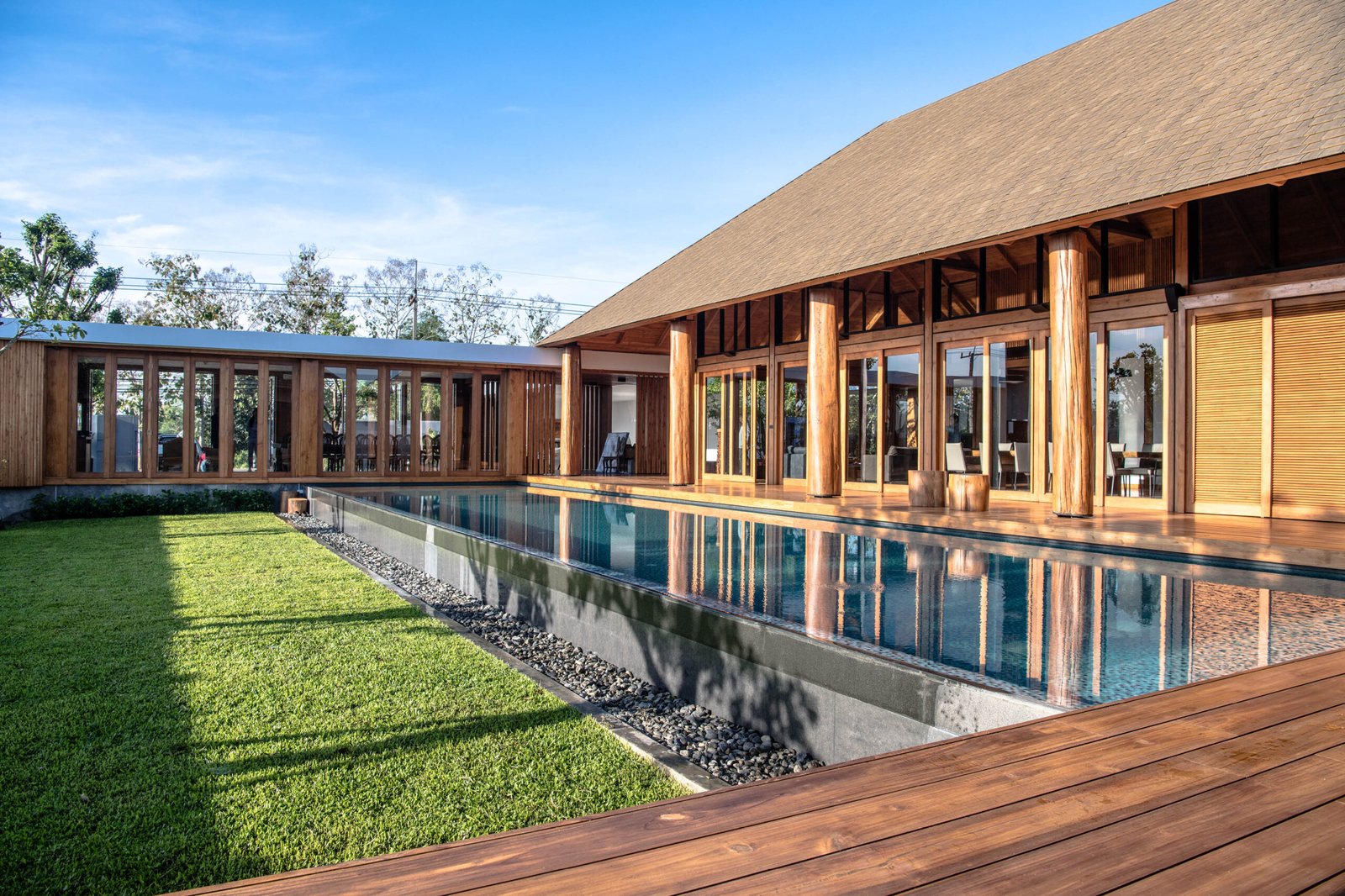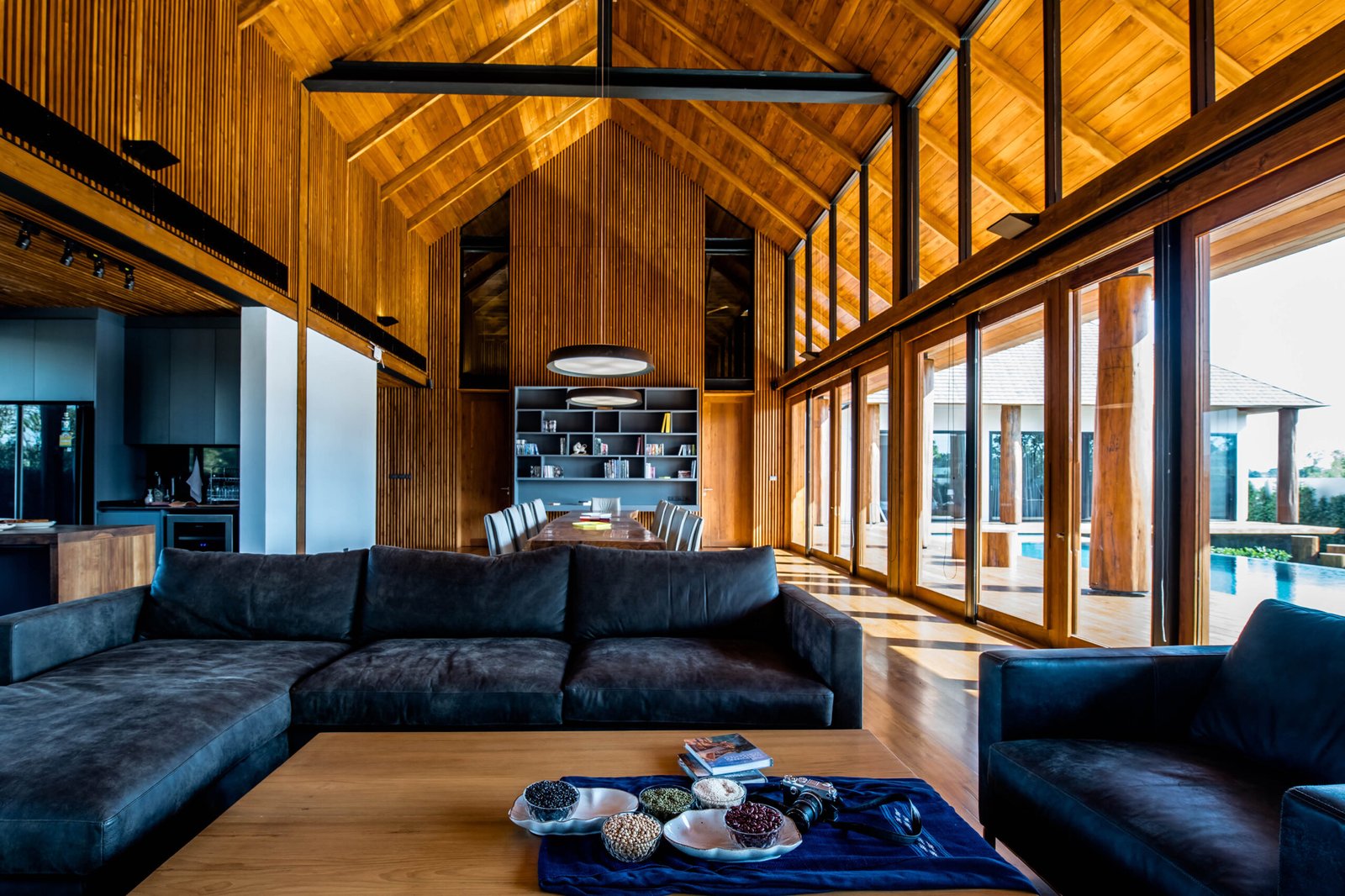Words Karnchit Punyakanok (Architects 49)
Images Architects 49
Multigenerational living is not new in Asia. Prior to COVID-19, Asians mostly lived in a single household with their extended families. In Thailand, it is common for seniors to live with their children, and even children stay with their parents until they get married or even longer. With housing, elder care, and childcare costs rising, this living arrangement is popular globally.
Due to cost savings, caregiving opportunities, and emotional support from family members, multigenerational living has gained traction in today’s market. Thus, multigenerational living means so much more than it used to. That’s why, more than ever, designing multigenerational homes is crucial to creating meaningful experiences. Designers have to navigate unique challenges, such as balancing the need for private and communal spaces, seniors’ limited mobility, and safety concerns for young children.
Beyond that, these designs must be flexible, considering that users’ needs and lifestyles can evolve.
A good balance for a purpose-driven design
Building a home that accommodates multiple generations can be tricky. We must consider requirements such as independence, privacy, hygiene, and other factors. Additionally, users’ wide variety of activities, time spent in the house, and changing needs necessitate flexibility in housing design. Architects and designers may need to plan for structural modifications, layout changes, and even building extensions to accommodate everyone’s needs, now and in the future. After all, the real challenge of multigenerational living isn’t just in the number of people inhabiting a household. Still, their routines are different given the different points of life they are in.
Large-scale changes may not always be the solution when addressing evolving needs. Here, a designer’s role is to recommend simple, constant adjustments to ensure designs remain purposeful. For instance, readjusting seating arrangements and replacing thick drapes with gauzy, lightweight curtains to create an open and airy atmosphere.
The right purpose-driven design can ensure all generations live comfortably together. Here are some key design considerations:




Spaces that promote live, work, and play
The ‘live, work, play’ concept is a growing priority for modern consumers. These homes are designed with multifunctional spaces to meet residents’ everyday needs, particularly with remote working and studying becoming commonplace. For instance, a loft can become an office or study room and be repurposed into a space for relaxation, like a playroom, art studio, or yoga space. Green spaces are also important, especially for urbanites looking to escape the hustle and bustle of the city. Family members can enjoy the outdoors together by building a backyard or deck. The space can also be converted into a serene outdoor office where residents can enjoy nature while doing work.
Think hygiene and safety for all
Hygiene is vital in a multigenerational home, particularly germ-prone spaces such as bathrooms and kitchens. For instance, bathrooms with touchless flushes and faucets are becoming more common to safeguard consumer hygiene. Fixtures from leading brands like American Standard offer advanced hygiene technologies (HygieneClean™) for toilets. This includes rimless designs and anti-stain and antibacterial technologies to eliminate hard-to-reach surfaces and prevent dirt, stains, and germs.
Safety is a key concern for parents with young children and those with less able family members. Thus, bathrooms should be designed to prevent tripping, slipping, and bath-time burns or scalds. Motorized countertops and kitchen cabinets that lower at the press of a button can be installed to help residents reach top shelves easily.


Designing for specialized uses
When it comes to multigenerational homes, accessibility is everything. Everyone in the house, and even those with limited mobility, should be able to get around easily. This could mean adding grab bars in bathrooms for seniors or considering a pedestal sink for wheelchair-bound people.
Wider hallways are attractive and practical, as they add a sense of openness and grandeur to the home. At the same time, they offer the flexibility to add railings or accommodate wheelchairs. Another consideration is widening doorways and lowering thresholds for wheelchair access to make the home more accessible for older family members.
Sustainable designs
Sustainability is often a key consideration when designing multigenerational homes. Designers and architects need to look into aspects of creating homes that are energy- or resource-efficient yet flexible in function and made from durable materials.
This can include opting for toilets or faucets that promote water savings or creating spaces with natural lighting to minimize turning on the lights during the day.
Additionally, open living spaces can be divided into zones via sliding screens, allowing residents to change rooms according to their needs.
Customize and adapt to deliver a purpose-driven multigenerational home
Purposeful design is a holistic approach to creating spaces that provide meaning and lasting impressions. Designers must ensure their projects meet their clients’ needs while meeting a space’s functional needs. Many times, clients may not be able to articulate a clear vision of what they want, making the task even more challenging. Designers must ask the right questions and focus on the most important details to help homeowners decide.
With the right design, multigenerational households can be a great way to create a supportive and loving home environment, serving not only the needs of its residents but also those of others, such as helpers, drivers, guests, and even pets. Purposeful design challenges designers to bring innovative solutions to projects and create meaningful home designs that stand the test of time. •


Partner content courtesy of American Standard

